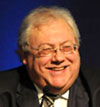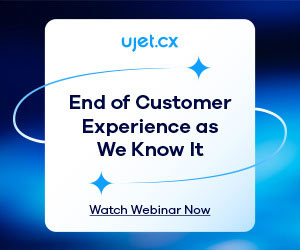This article focuses on focus on listening to customers and staff. It is the fifth strategy presented in our article: Top 10 Customer Service Strategies.
The late, great customer service and contact centre expert Paul Cooper wrote this article for us and covers some keys areas in how to best gather and utilise customer and staff feedback.
How Can We Maximize the Value of Customer and Staff Feedback?
Listening to customers and staff is the obvious first step to ensuring that any organisation knows what the customer wants, and making sure that they can give it to them.
Well, I say obvious, but it is very clear that the majority of organisations in the UK, public and private sector, still don’t actually make any effort to implement this first step in any meaningful way.
The majority of organisations in the UK, public and private sector, still don’t actually make any effort to implement this first step in any meaningful way.
Oh sure, many do customer satisfaction surveys, have customer and staff focus groups, monitor their complaints and the like, but this is only the mechanics of getting it right. Really listening to customers (and staff) takes a bit more effort.
So, how do we all maximise the benefits from customer and staff feedback?
In this there are traditional methods that have been around a while, and also newer, mostly technology-based, ideas that can support good listening to customers as part of an overall comprehensive plan (though not substitute for it!)
Customer Satisfaction Surveys
Firstly, of course, one can carry out customer satisfaction surveys.
Here, it must be remembered that the only good reason to do these, especially on a regular basis, is to find the things throughout the organisation that need improving, and then improve them.
Find out how to measure CSAT in our article: How to Calculate a Customer Satisfaction Score (CSAT)
Back to the Floor
Next there is that old adage – walk a mile in their shoes. Yes, I do mean actually do it! And not just you – all senior management should regularly go “back to the floor”.
Your “back to the floor” time should include time working and observing in the key area of customer contact, to see first hand what is going on at the real sharp end, listening to both customers and the staff.
Mystery Shopping
Thirdly, mystery shopping by an independent third party is an extremely useful tool in all sectors.
Regular, professional checking of your processes can be invaluable as it should be without the politics and emotions that these things done internally can cause.
Listen to Staff
Your people usually know what is wrong with your organisation well before the customers do, will care that things get resolved and will care even more if they are listened to, and actions taken.
To do this, you can set-up staff focus groups, as you would arrange customer focus groups, with caring customers who can give feedback.
Benchmarking
Check out other organisations. Regularly ensure that you and your team are comparing yourself with others, both direct competitors and other organisations you admire.
Also, look at those you don’t rate to see what they are doing wrong – are you doing those things too?
For more on this topic, read our article: Contact Centre Benchmarking – How to Get More From Your Metrics
Mechanisation
This has come a long way, especially on the internet, in the last years.
Most customers (though remember not all) are very happy to use websites and the like to find out information and even place orders, provided that the site is clear, efficient, safe, quick, and easy to navigate.
However, when something goes wrong, the vast majority of customers want to speak to a human being – now!
Call Monitoring
On the in-house technology side, telephone call monitoring has been with us for a while now, and some organisations use it very well and comprehensively.
If you are primarily an organisation with a contact centre based on incoming calls it is essential to maximise use of modern recording techniques to learn from customer calls.
However, there are some drawbacks with the standard systems of call monitoring, not that one should abandon it.
Firstly, the number of calls that can actually be listened to is limited, as it has to be done in real time.
Secondly, the temptation to use the calls in HR for appraisals and performance management instead of continuous improvement and training of staff can be overbearing.
Finally, to maximise benefits staff should also listen to themselves and others to see how they could improve, but this can mean excessive off-the-job time.
Click here to try out our Free Call Monitoring Form
Speech Analytics
Speech analytics has been the next breaking idea for at least the last five years, but I believe that this, and other related technology breakthroughs, like call data recognition and capture for CRM systems, can make big efficiency improvements.
All calls can be monitored for keywords, phrases and even intonation to get real feedback…
Through these, using set parameters, all calls can be monitored for keywords, phrases and even intonation to get real feedback on what a customer says is important.
Also though, especially with recognition data, there is the ability to “surprise and delight” customers – always a key issue of great service recognition.
After all, surely to be greeted by an agent who knows who you are before you speak, who has your data to hand, and has an idea what you are calling about before you tell him/her must tick that box.
Finally, a key issue with speech analytics is that it has application across the organisation, to sales, marketing, even finance, who can set specific parameters to monitor what customers are saying to them.
My final words of caution, however, are the ones I always use with any technology “solution”.

Paul Cooper
These are not substitutes for great customer service and the human touch. They are excellent tools that, in the hands of experts, can help you make significant improvements to your service levels.
After all, Sir Terry Leahy once said, “What’s good for the customer MUST be good for Tesco’s.”
This article was written for us by Paul Cooper a valued and not-forgotten member of customer service and contact centre industries.
Read the next three articles in the series by following any of the links below:
- Top Customer Service Strategies – No.6 Welcoming Complaints
- Top Customer Service Strategies – No.7 Look at Processes from Varied Viewpoints
- Top Customer Service Strategies – No 8. Use Tools with Caution
Author: Jo Robinson
Published On: 25th Jul 2012 - Last modified: 15th Aug 2025
Read more about - Customer Service Strategy, Customer Feedback, Customer Satisfaction (CSAT), Listening, Rankings, Service Strategy, Speech Analytics, Staffing







































